
Syllabus: Part 1
Discover new depths, detail, and structure in all the music you hear, play, and love.
In six weeks you’ll wake up your ears and musical brain using the mighty skill of active listening and learn a four-dimensional framework for understanding how music is put together – and why it has the power it does.
Part 1 of The Musician’s Ear begins with The Active Listener’s Handbook and proceeds with six weekly Listening Guides, each with detailed exercises to help you dig into the musical details of audio tracks selected from a surprising range of classical to contemporary musical genres from all over the world.
The Active Listener’s Handbook
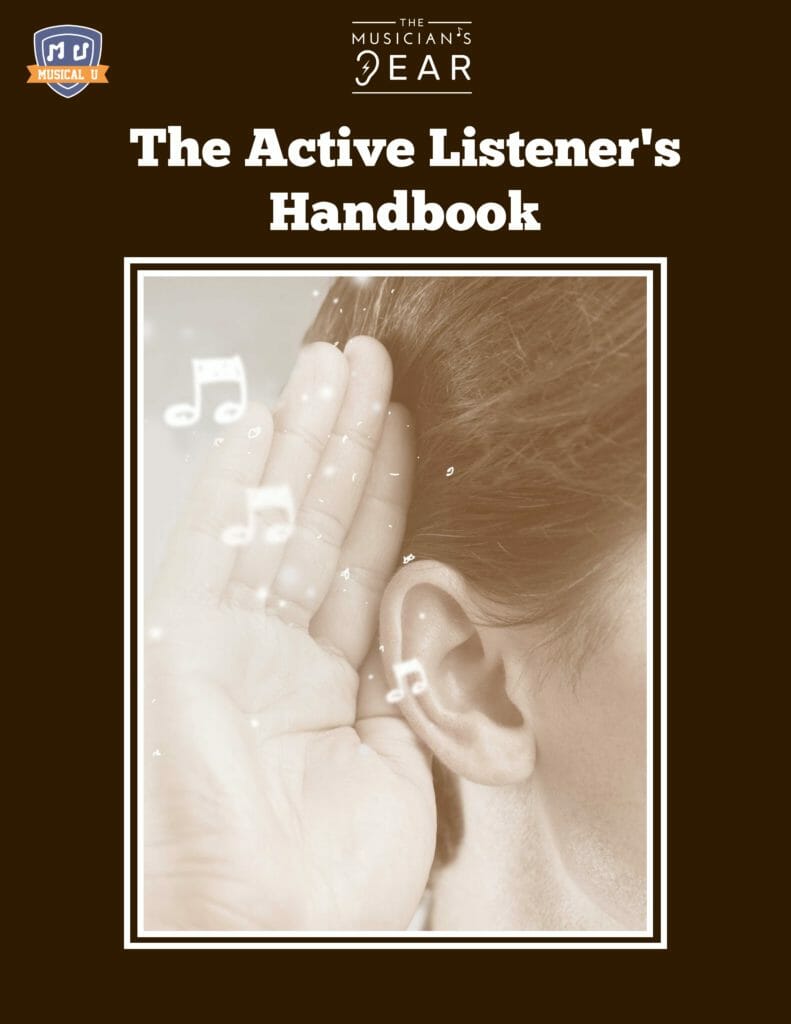
The Active Listener’s Handbook is your all-in-one guide to active listening. It explains the process and equips you with a clear method and frameworks you can use to begin exploring any music you choose.
Contents
- Introduction: The Power of Active Listening
- Chapter 1: Active Listening – How To
- Chapter 2: The Dimensions of a Musical Note
- Chapter 3: Instruments and Timbre
- Chapter 4: Pitch
- Chapter 5: Rhythm
- Chapter 6: Dynamics and Articulation
- Chapter 7:Musical Texture and Form
- Chapter 8: Audio Frequencies and Effects
- Summary
- 7-Day Action Plan
Week 1: Instrumentation
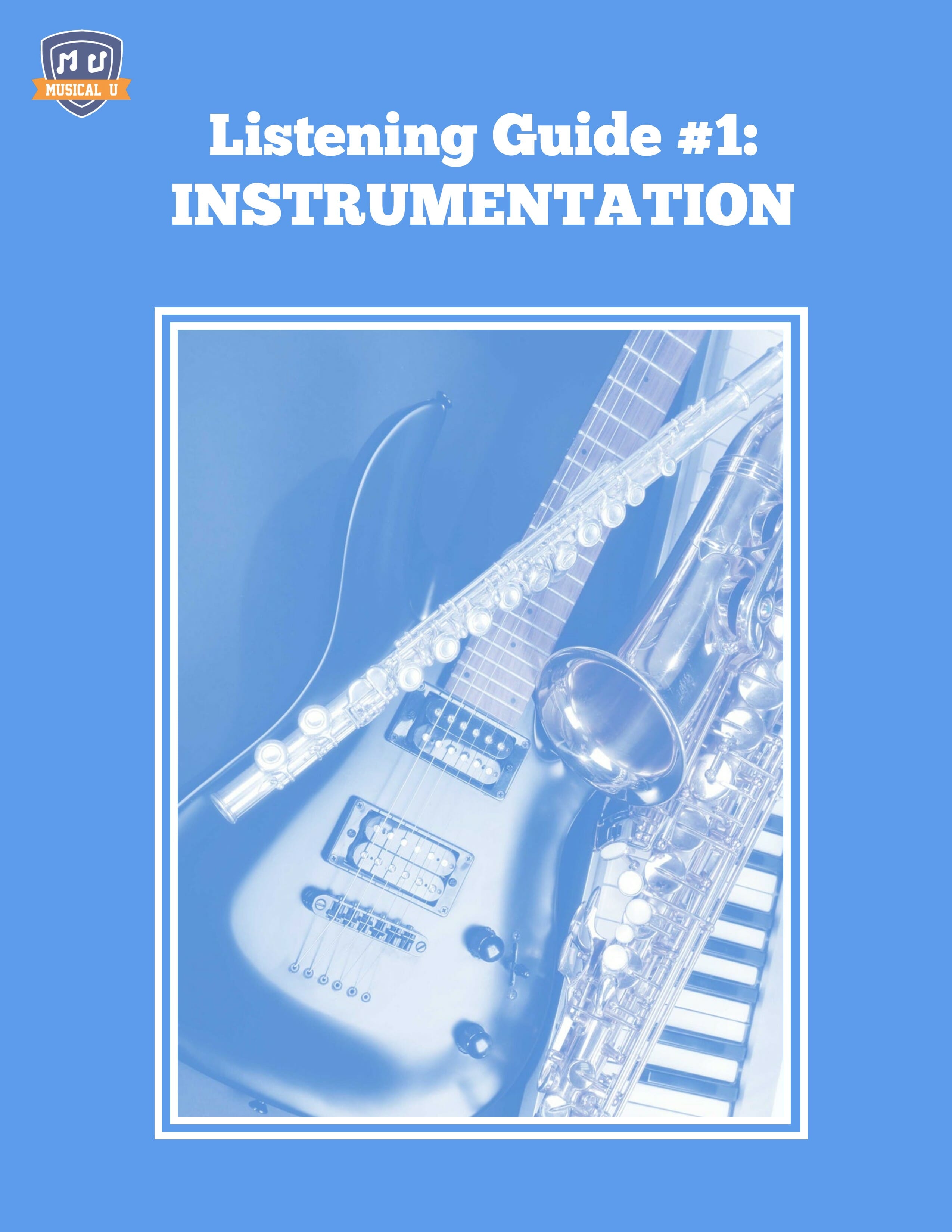
The best place to start with active listening is the simple question: What instruments are there?
This apparently simple question turns out to be the gateway to a whole range of interesting exploration of the layers, roles, and interplay between each part of the musical whole…
Week 2: Texture and Form
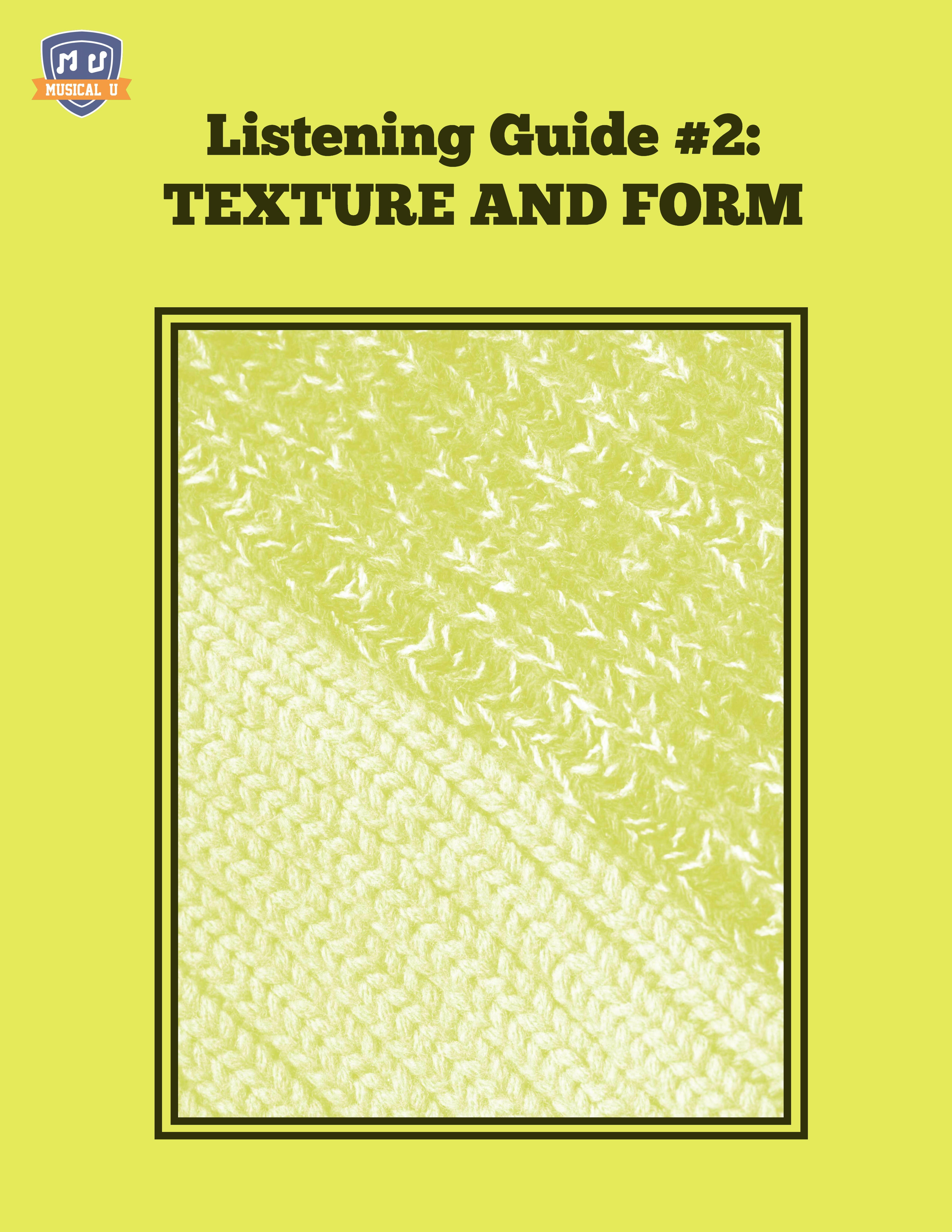
Exercise the power of listening “deep” and discover how shifting and changing textures between these basic three creates form, motion, and emotion in music.
Week 3: Rhythm
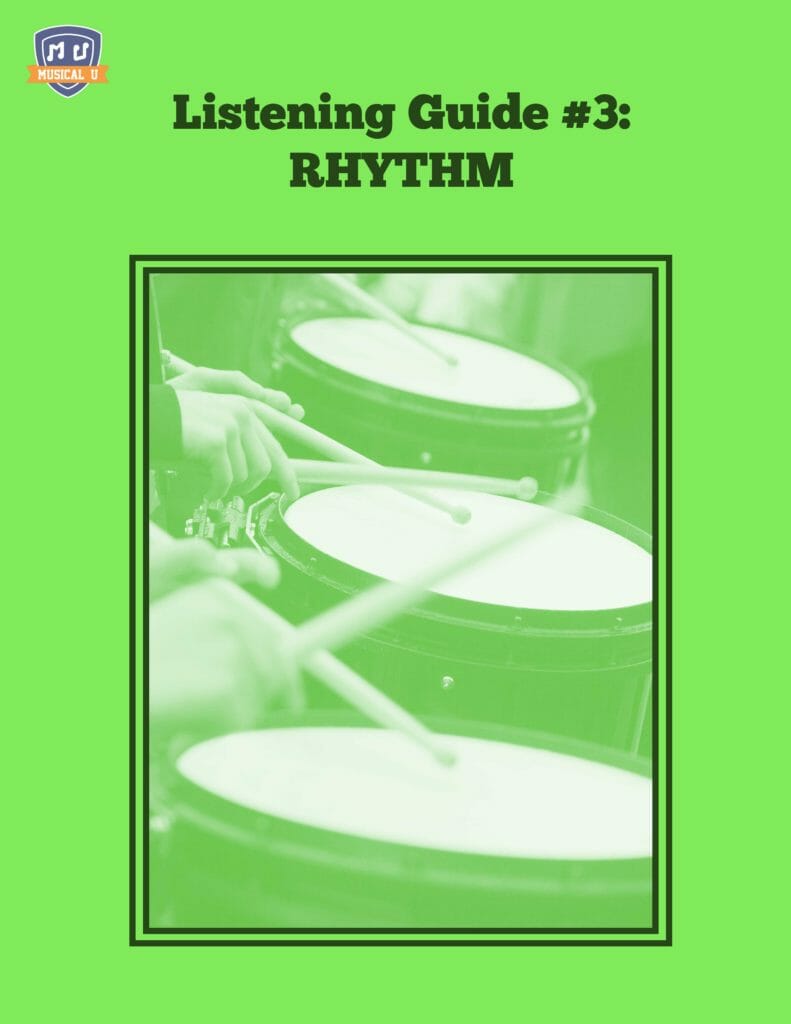
Learn how to listen for rhythm and how it creates form in genres as varied as rockabilly and classical.
Week 4: Pitch
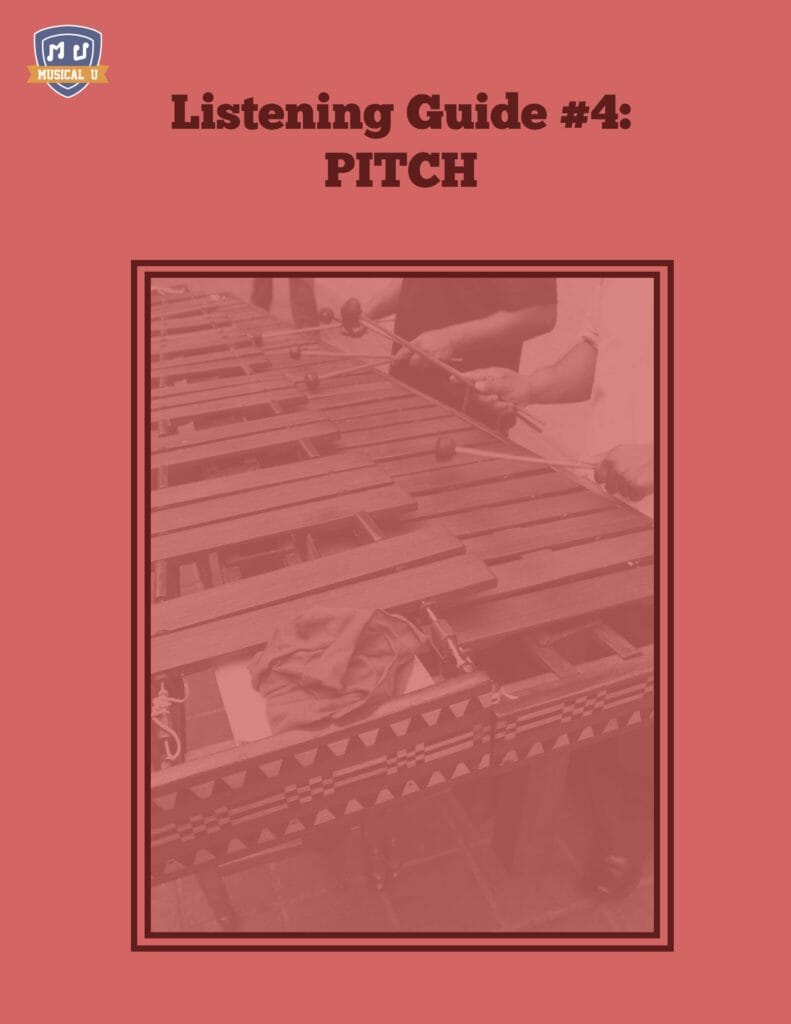
Pitch is the highness and lowness of a sound. As pitches move through time, they can go higher, lower or stay the same. Yet from these three simple choices come all the melodies and harmonies past, present, and future.
Learn how to hear the patterns, repetitions, and variations in the movements of pitches that construct the melodies and the distinct musical forms that we hear and enjoy.
Week 5: Harmony
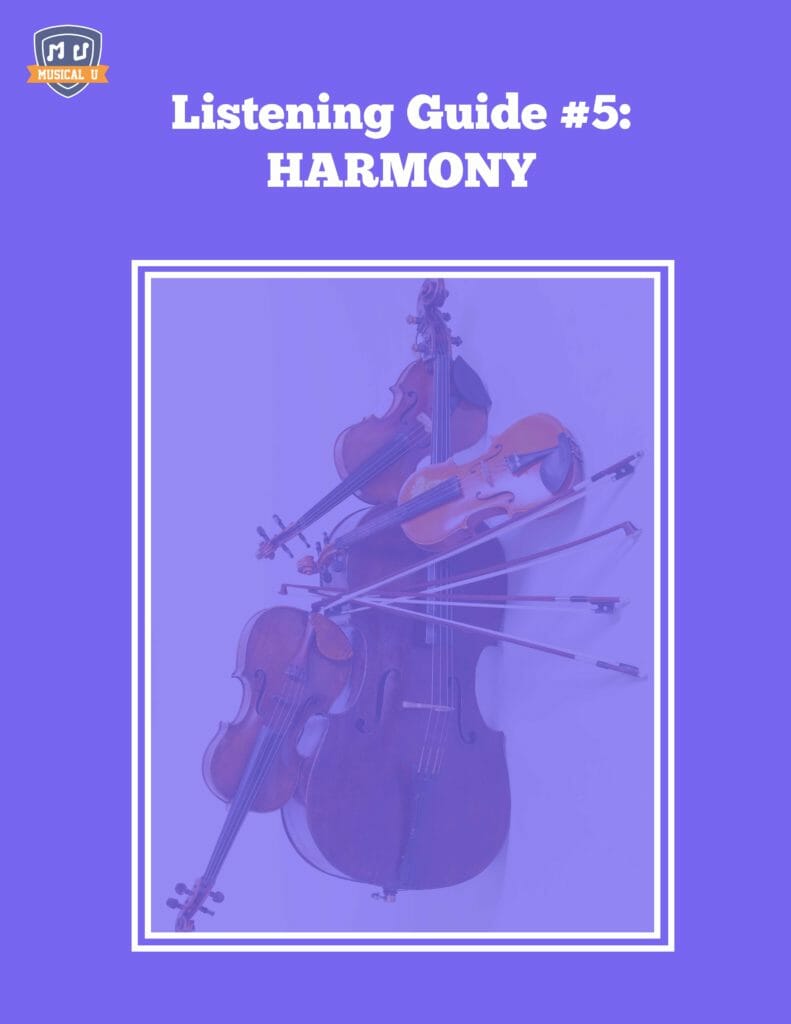
Learn how to hear the patterns, repetitions, and variations in the movements of the harmony that provide a framework and structure of how melody interacts with the other pitch dimensions in music.
Week 6: Audio Effects
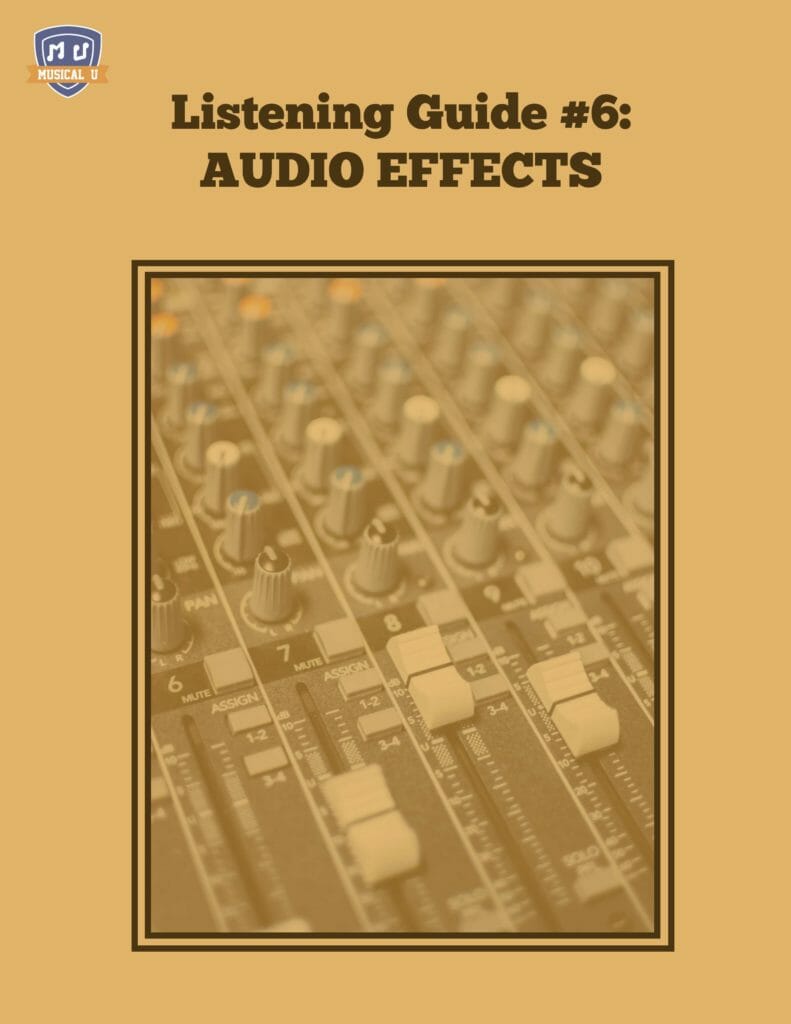
Learn how audio effects are employed as other musical dimensions, to differentiate form and texture, to tell a musical story, and how they have expanded the potential of acoustic instruments.
